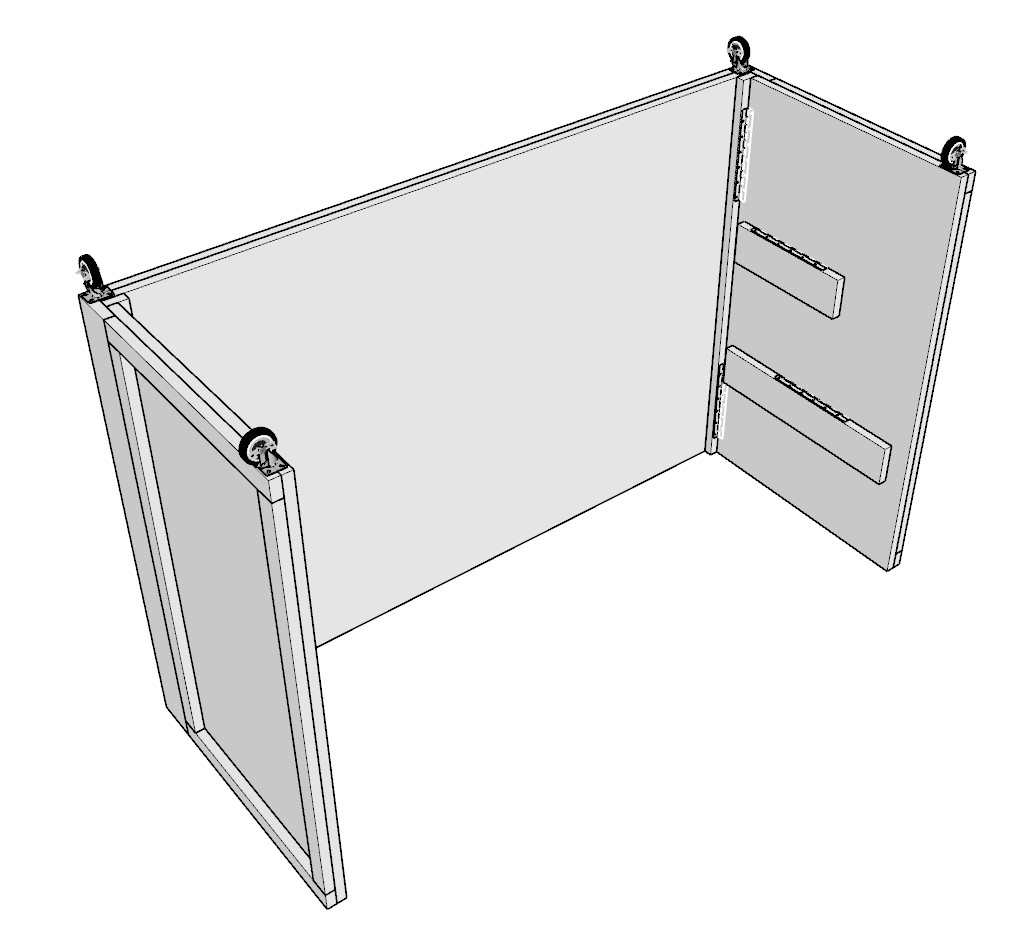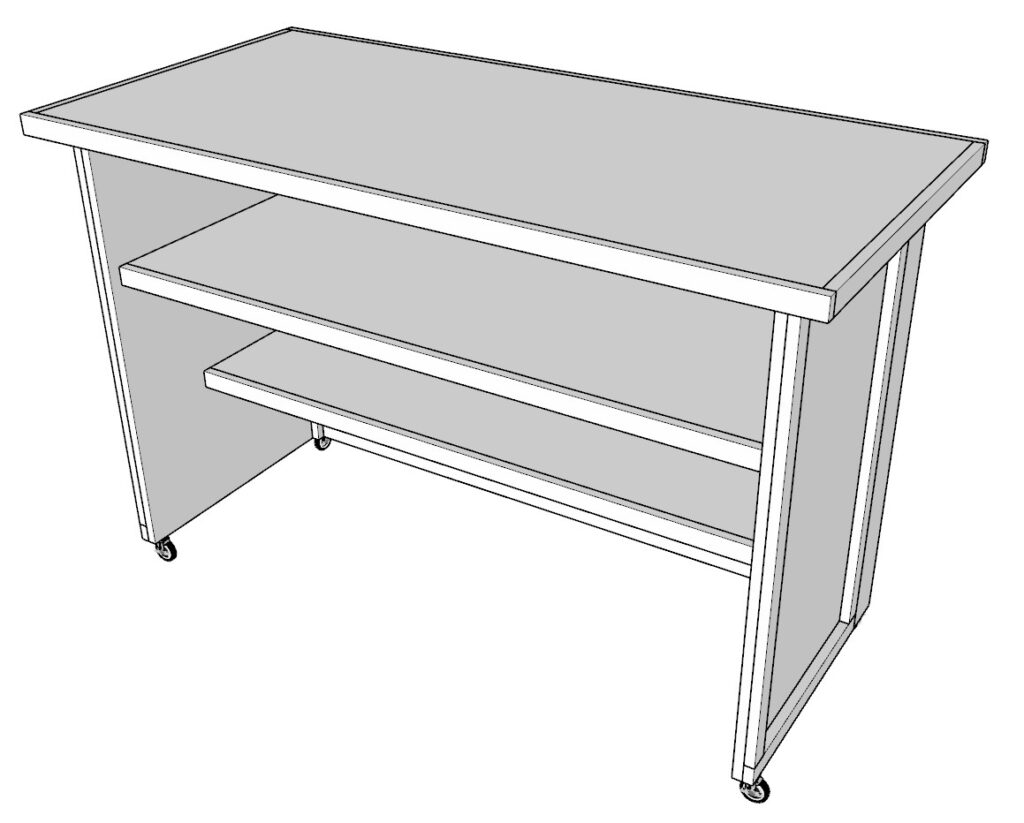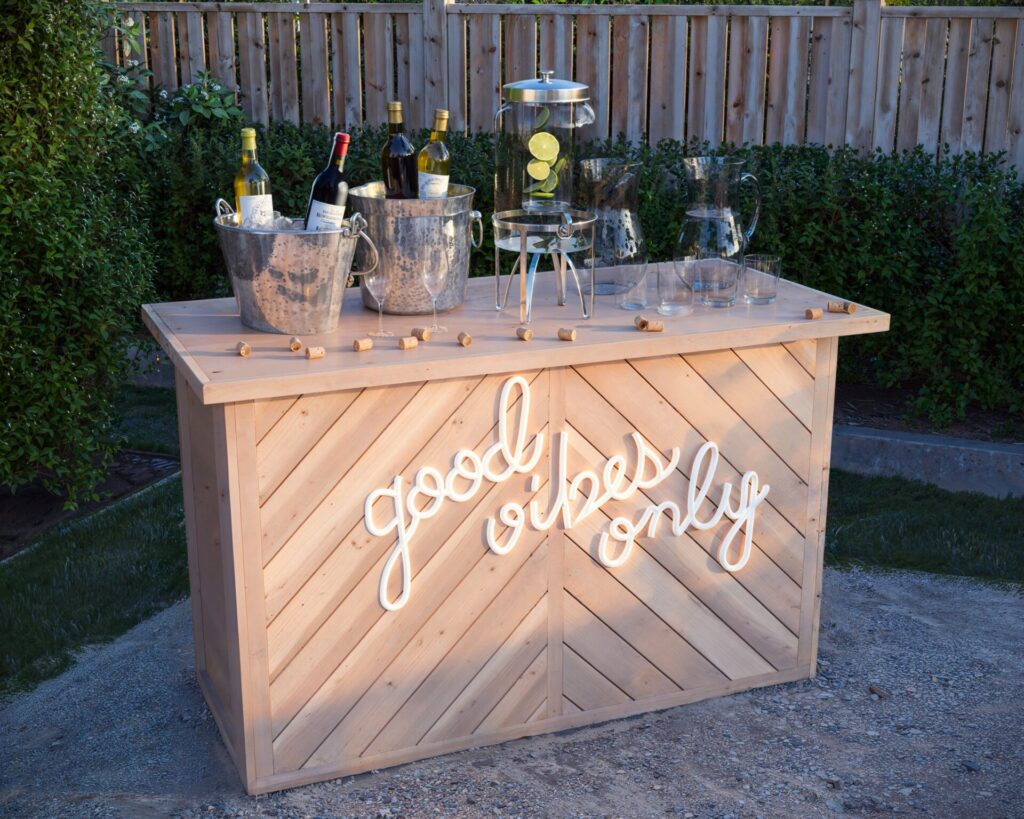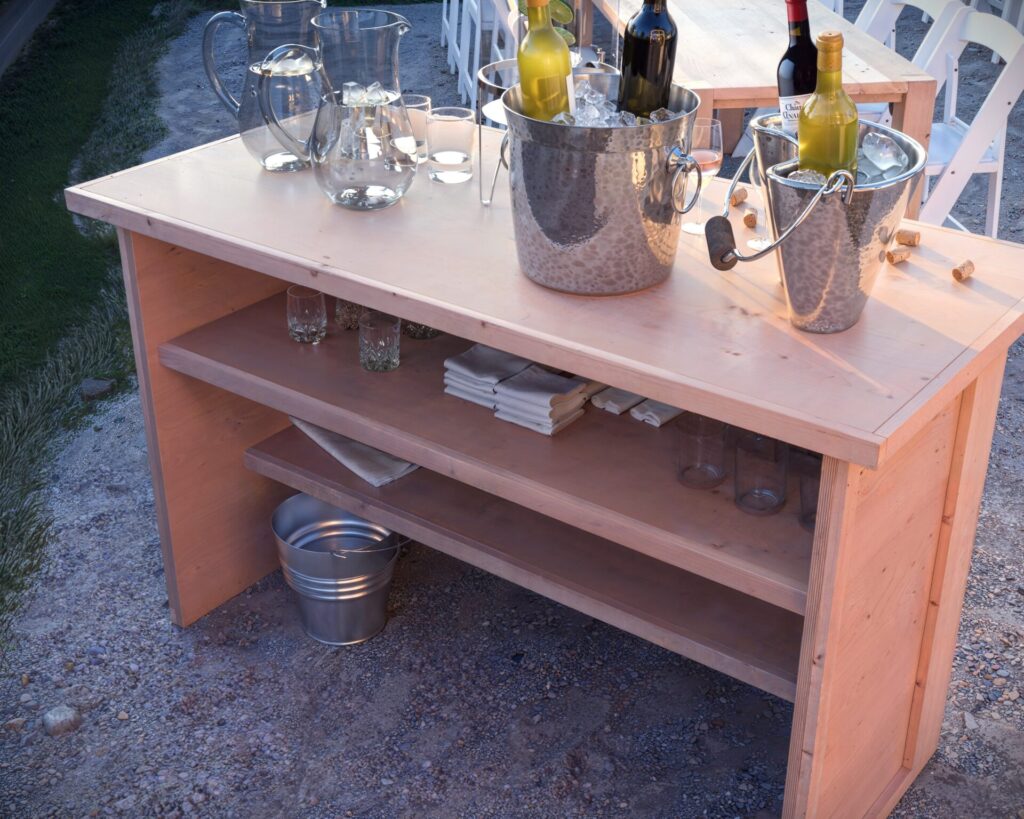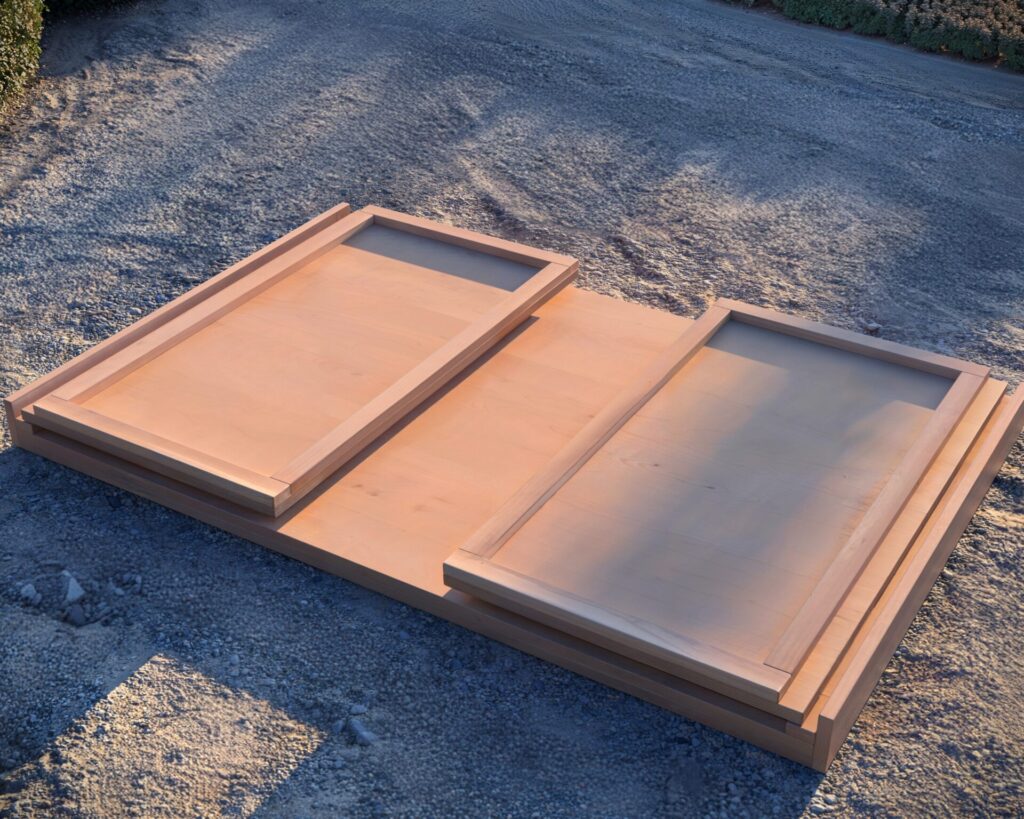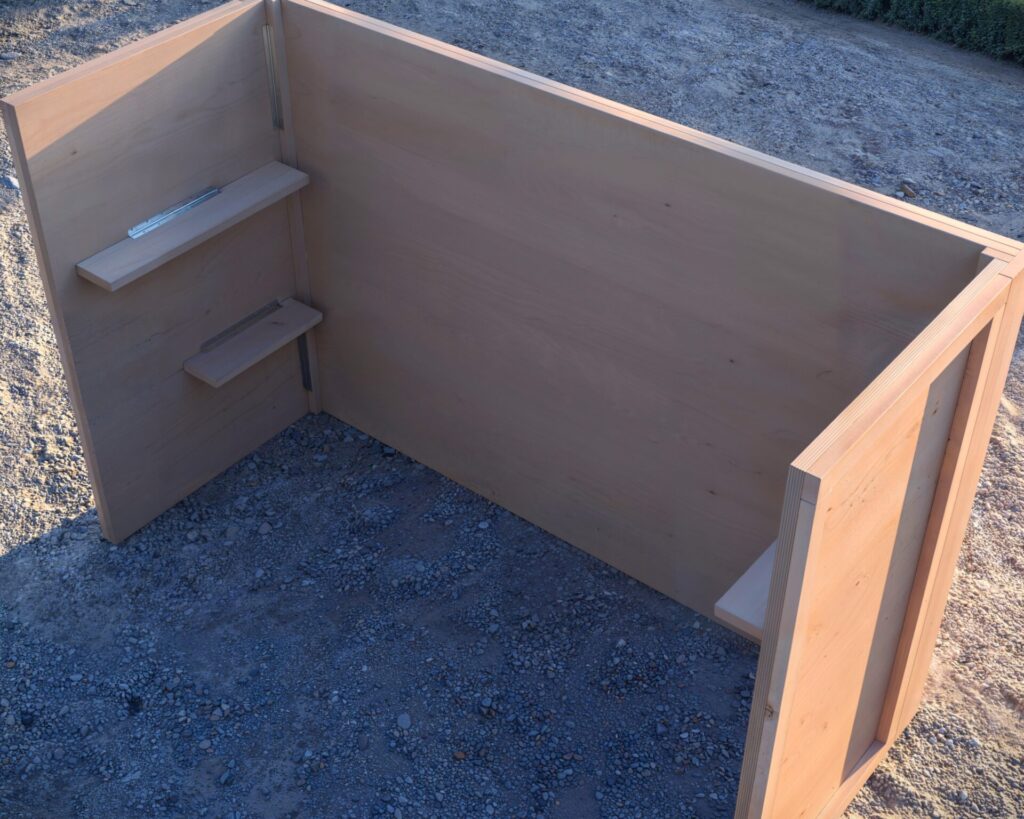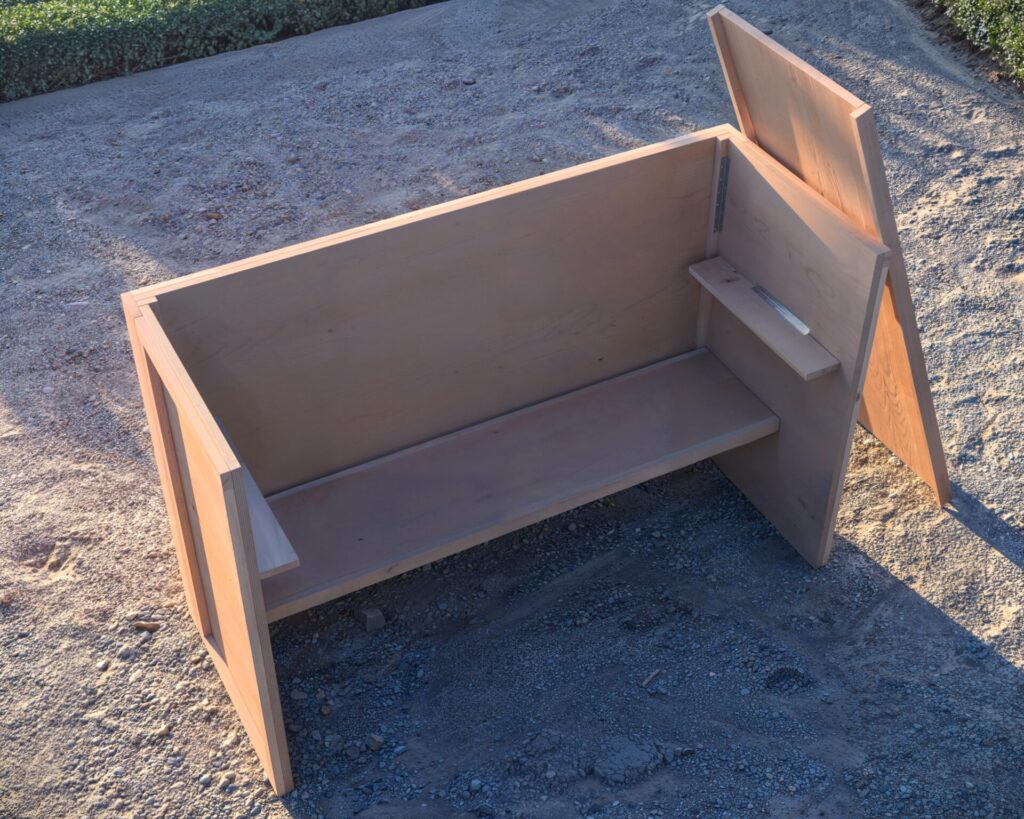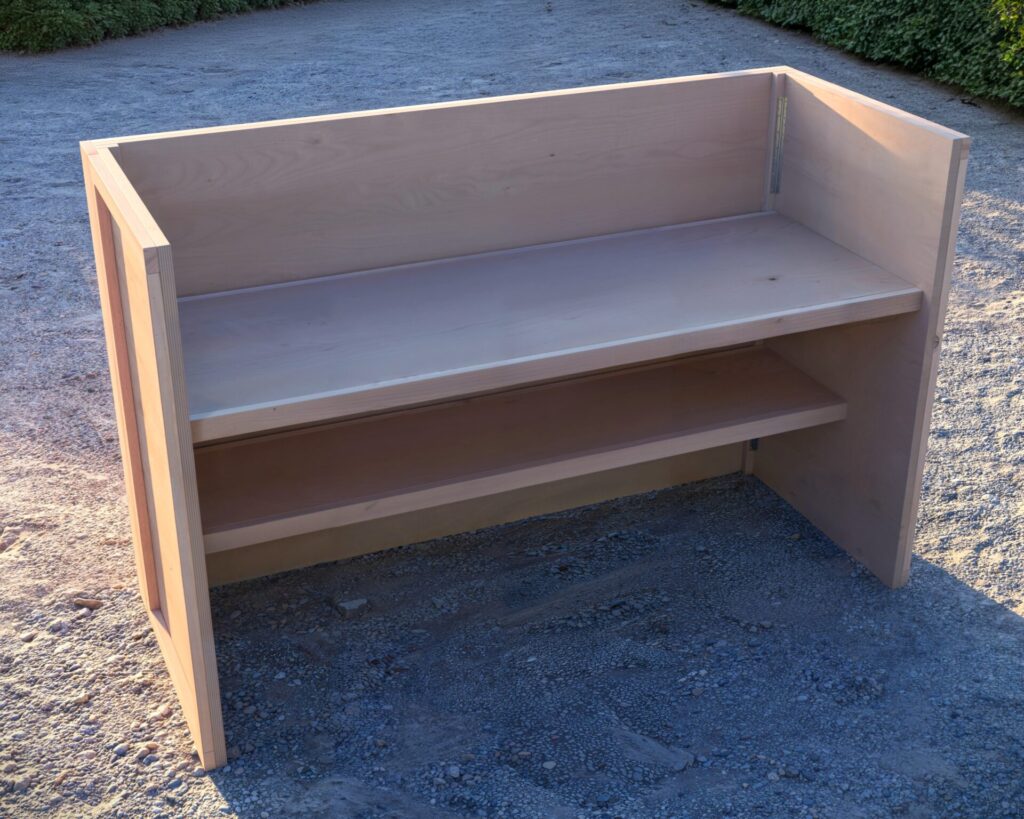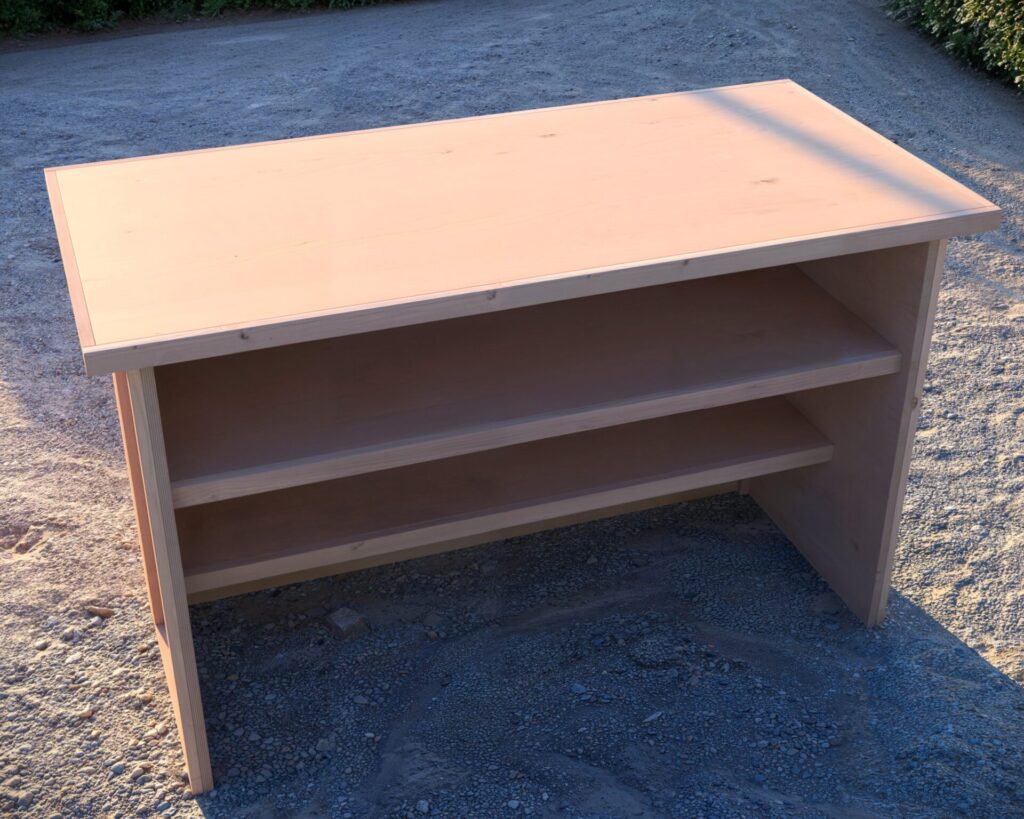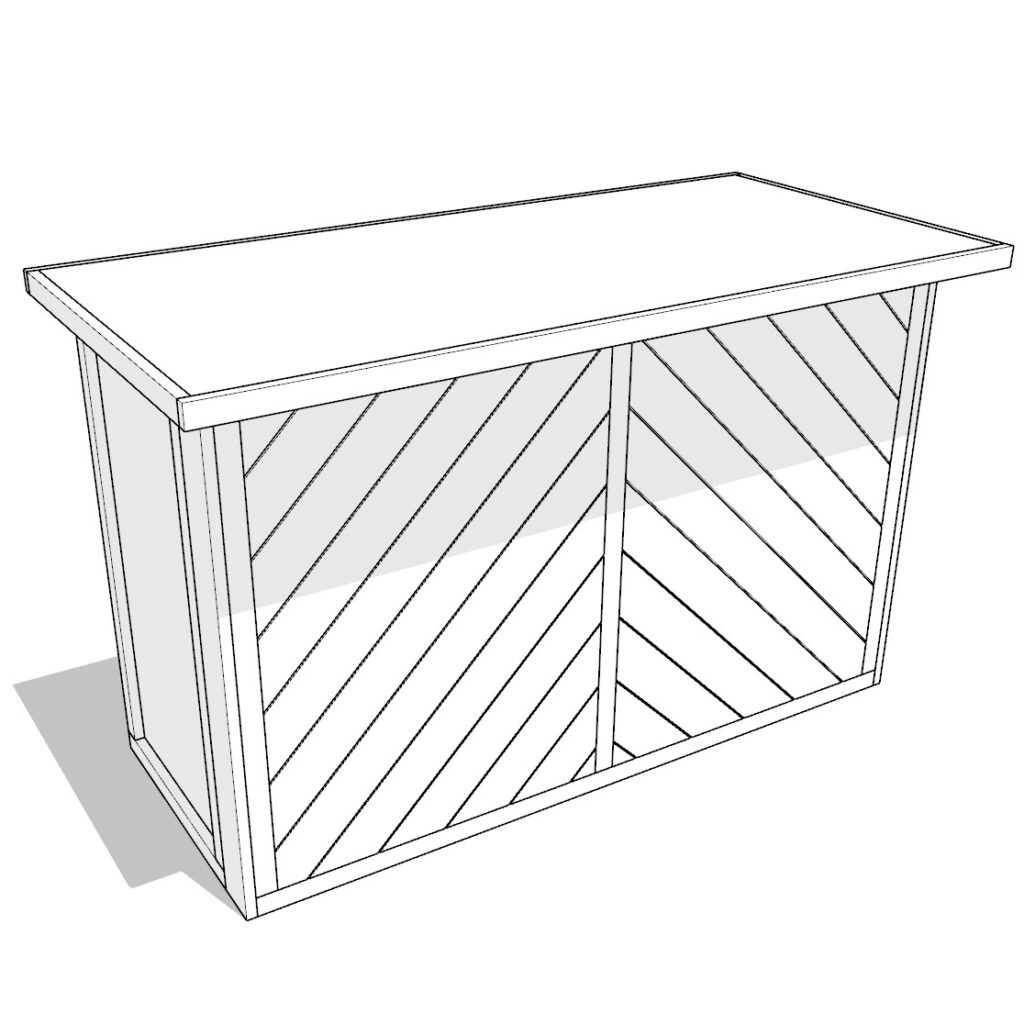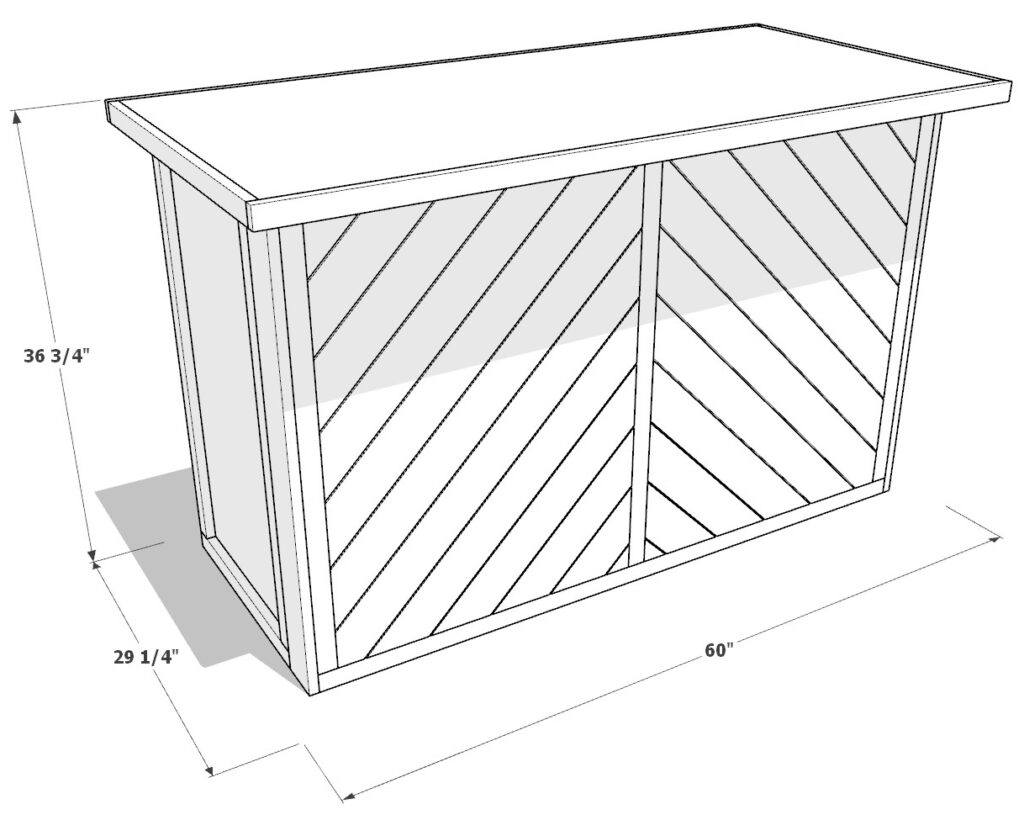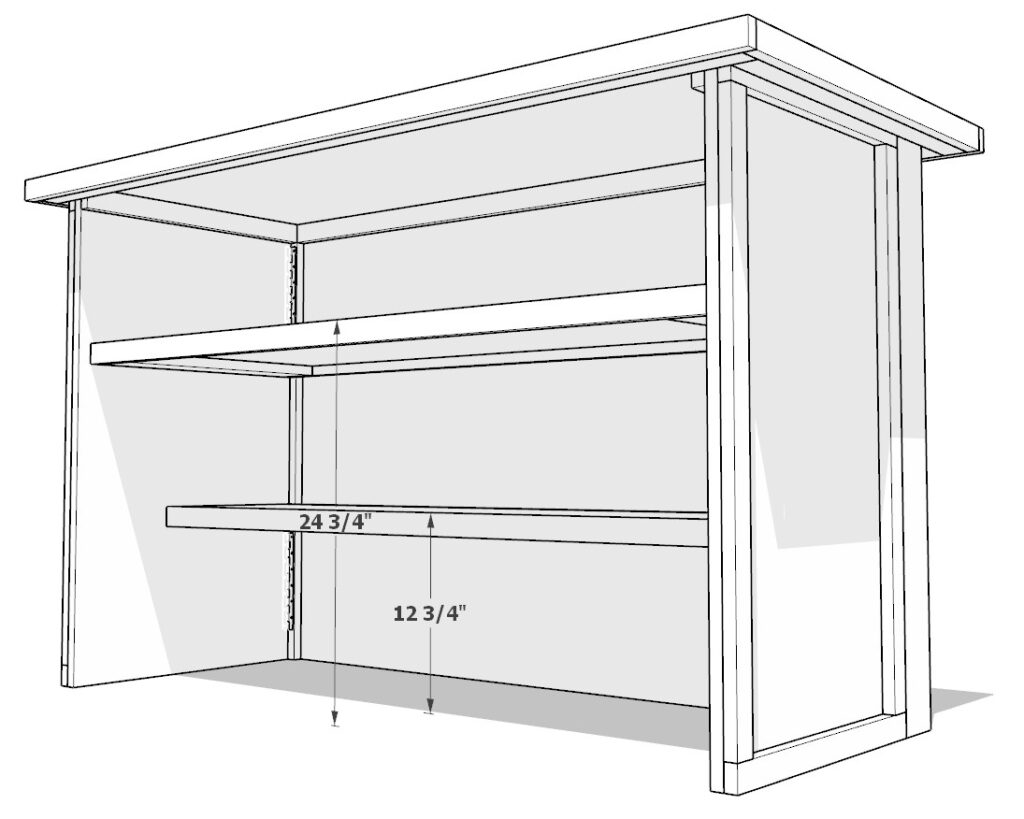Introduction:
Imagine hosting a party with a stunning bar that catches everyone’s eye, then effortlessly folding it away for easy storage. Whether you’re looking to impress guests with a stylish wine bar, create a self-serve coffee station, or set up a dessert table for special occasions, our collapsible coffee bar is the perfect solution. With its portability, ease of setup, and customizable design, it’s more than just a piece of furniture—it’s a game-changer for any host. Picture yourself enjoying the compliments as your guests admire your handiwork, then easily storing the bar until your next event. The versatility and convenience of this bar make it an essential addition to your home, ready to adapt to any occasion.
Detailed Plan for the Floating Dot Work Tracker
1. Overview
The goal is to create a floating dot application that tracks work hours for two different businesses, logs the data, and generates weekly, monthly, and annual graphs.
2. User Interface (UI)
2.1 Floating Dot:
- Design: A small, movable dot that stays on top of all other windows.
- States:
- GoodDIYPlans: Red (not working), Green (working).
- AI Consulting Business: Yellow (not working), Blue (working).
- Interaction: Click to toggle between states and drag to move around the screen.
2.2 Color Indicator:
- Ensure the dot changes color based on the business and work status.
- Implement a right-click menu to switch between businesses.
3. Data Logging
3.1 Structure:
- File Format: Excel (.xlsx) file.
- Sheet Names: Separate sheets for each business (e.g., “GoodDIYPlans”, “AIConsulting”).
- Columns: Date, Clock In Time, Clock Out Time, Duration (minutes).
3.2 Logging Mechanism:
- Log clock-in and clock-out times, calculate the duration, and append to the corresponding sheet.
4. Data Aggregation
4.1 Weekly Aggregation:
- Calculate total hours worked for each week.
- Group data by weeks and sum the durations.
4.2 Monthly Aggregation:
- Calculate total hours worked for each month.
- Group data by months and sum the durations.
4.3 Annual Aggregation:
- Calculate total hours worked for the year.
- Group data by year and sum the durations.
5. Graph Generation
5.1 Tools:
- Use Python libraries (e.g., Pandas, Matplotlib) to generate graphs.
- Export graphs as image files or embed them in the Excel file.
5.2 Weekly Graph:
- Bar chart showing hours worked per week.
5.3 Monthly Graph:
- Line chart showing hours worked per month.
5.4 Annual Graph:
- Bar chart showing hours worked per year.
6. Implementation Steps
6.1 Setup Environment:
- Install necessary Python libraries: Tkinter, openpyxl, Pandas, Matplotlib.
6.2 UI Development:
- Create a Tkinter window for the floating dot.
- Implement color changing and position dragging functionality.
- Add right-click menu for business selection.
6.3 Data Logging:
- Create or open the Excel file.
- Implement functions to log clock-in and clock-out times.
- Calculate and log durations.
6.4 Data Aggregation:
- Write functions to aggregate data weekly, monthly, and annually.
6.5 Graph Generation:
- Create functions to generate and save graphs based on aggregated data.
6.6 Final Integration:
- Combine all components to ensure smooth operation.
- Test the application thoroughly to handle edge cases (e.g., computer shutdown, multiple sessions).
Features and Specifications:
Crafted from 3/4″ thick plywood and common 1×2 and 1×4 lumber boards, our coffee bar combines durability with a sleek design. The use of piano leaf hinges makes it collapsible, ensuring it’s easy to set up and break down. When disassembled, it breaks down into four compact pieces that can be easily stored without taking up much space.
Ease of Transport and Stability
Designed with portability in mind, this coffee bar is easy to transport, making it perfect for various events. The sturdy coffee bar top locks into place, providing a stable surface for serving. The shelves are equally robust, locking into place to ensure they remain secure during use. Assembled using glue and pin nails, the structure is both strong and reliable.
Key Benefits
- Versatility: Use it as a dessert table, coffee bar, serving table, wine bar, or self-serve station.
- Customization: Easily customize with your favorite paint or finishes to match your decor.
- Portability: Compact and lightweight design for easy transport and storage.
Conclusion
Ready to build your own versatile and stylish coffee bar? Our DIY plan is your ultimate guide, featuring visual color-coded diagrams, detailed step-by-step instructions, a cut list, a lumber shopping list, a tools list, and a materials list. With cost estimates and imperial dimensions included, you’ll have everything you need to create this stunning piece. Whether you’re a seasoned DIY enthusiast or a beginner, our plan makes the process straightforward and enjoyable. Build your coffee bar today and enjoy the satisfaction of having a custom, functional, and beautiful addition to your home. Ready to get started? Grab your comprehensive DIY plan now and transform your gatherings with a one-of-a-kind coffee bar.
Time
(varies with experience)
Cost
Estimated Built Cost $200:(Note: Costs can vary by location and supplier.)
Skill level required
Beginner
DIY Collapsible Event Bar Plans
What is included in the PDF download?
- Easy to read step by step instructions
- Material list
- Tools needed
- Helpful links to materials and tools needed
Tools and Materials:
Available with the purchase of the DIY plan PDF.
Lumber Shopping & Cut List:
Available with the purchase of the DIY plan PDF.
Step 1: Building the Front Face of the Folding Coffee Bar
Sub-step 1: Prepare the Foundation
- Foundation Setup:
- Take a 54 inch x 36 inch, 3/4 inch thick plywood sheet. This will serve as the foundation for the face of the bar.
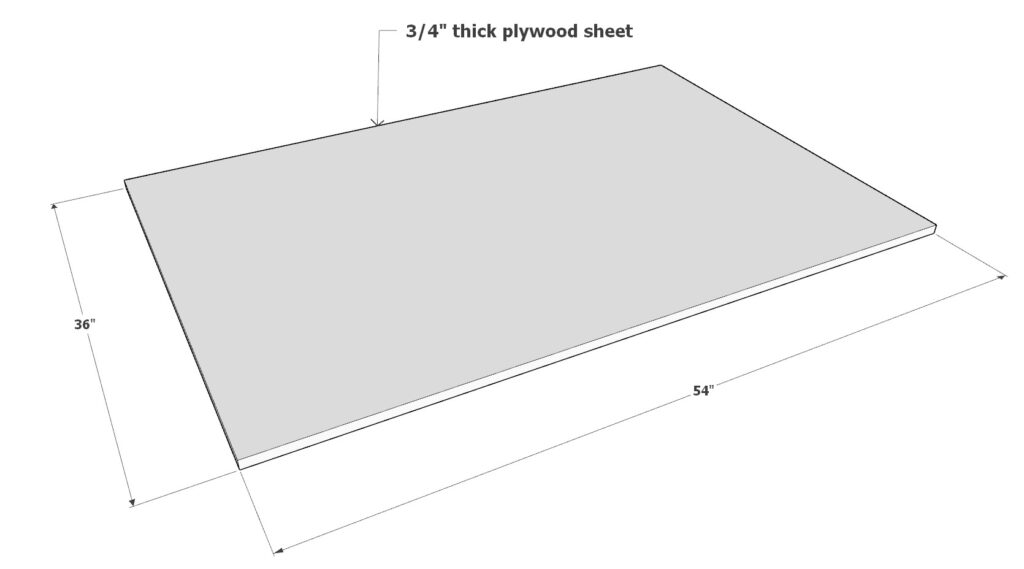
Sub-step 2: Construct the Frame
- Assemble the Frame:
- Arrange two 54 inch 1×2 lumber pieces and three 33 inch 1×2 lumber pieces into a rectangle. Place one 33 inch piece in the center as a divider.
- Secure these pieces to the plywood sheet with wood glue and 1.25 inch pin nails.
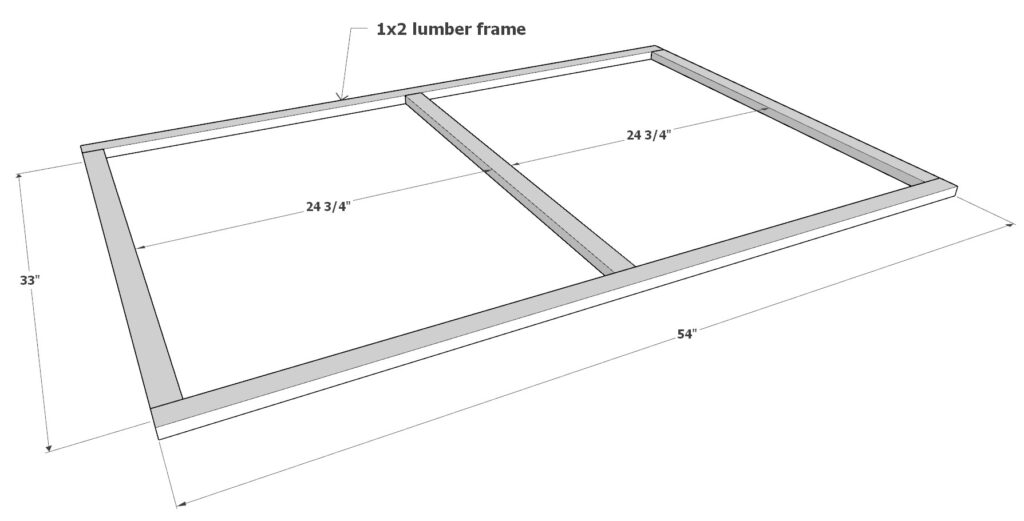
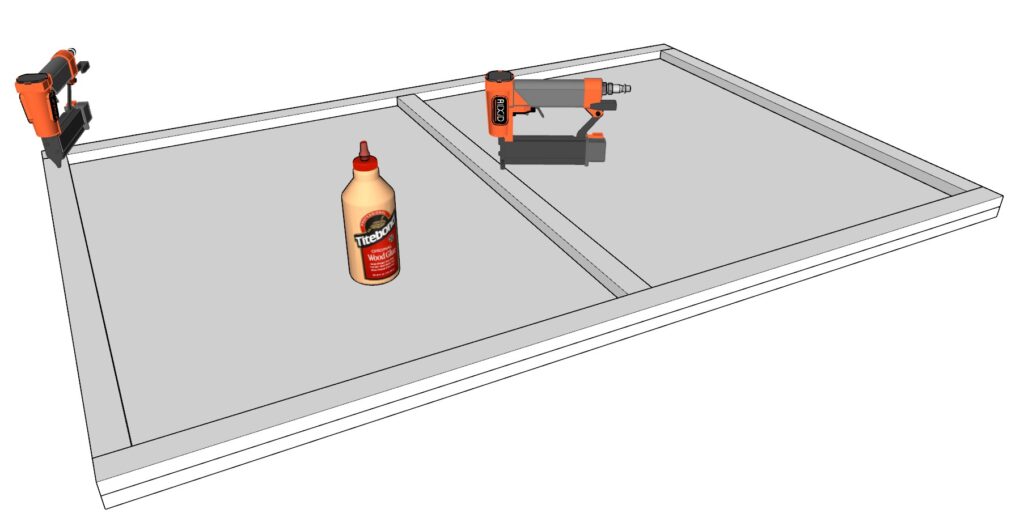
Sub-step 3: Attach End Pieces
- End Pieces Attachment:
- Flip the assembled frame upside down.
- Attach two 36 inch 1×4 lumber pieces to the ends of the rectangle. Use wood glue and 1.25 inch pin nails (these pieces are color-coded in green in the diagram).
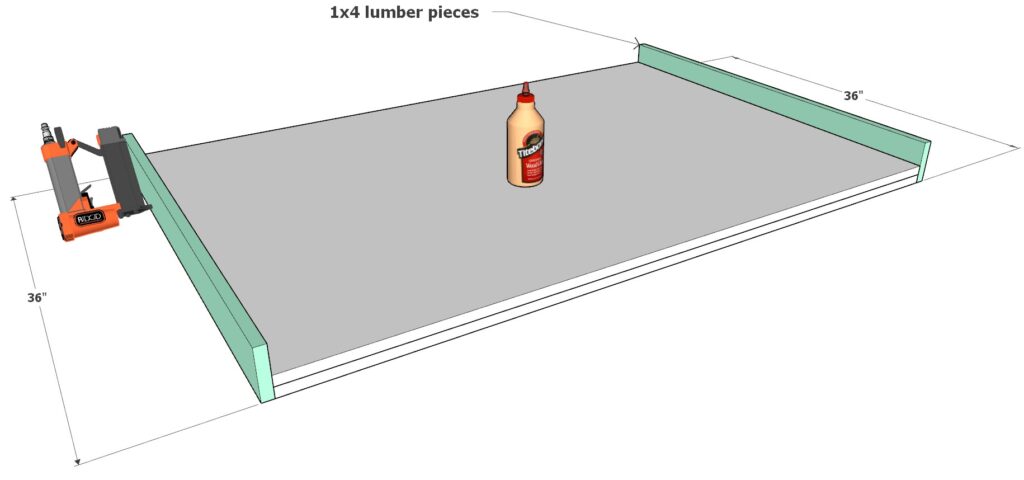
Sub-step 4: Secure Adjacent Pieces
- Adjacent Pieces Addition:
- Attach two 36 inch 1×2 lumber pieces adjacent to the 1×4 pieces. Secure with wood glue and 1.25 inch pin nails.
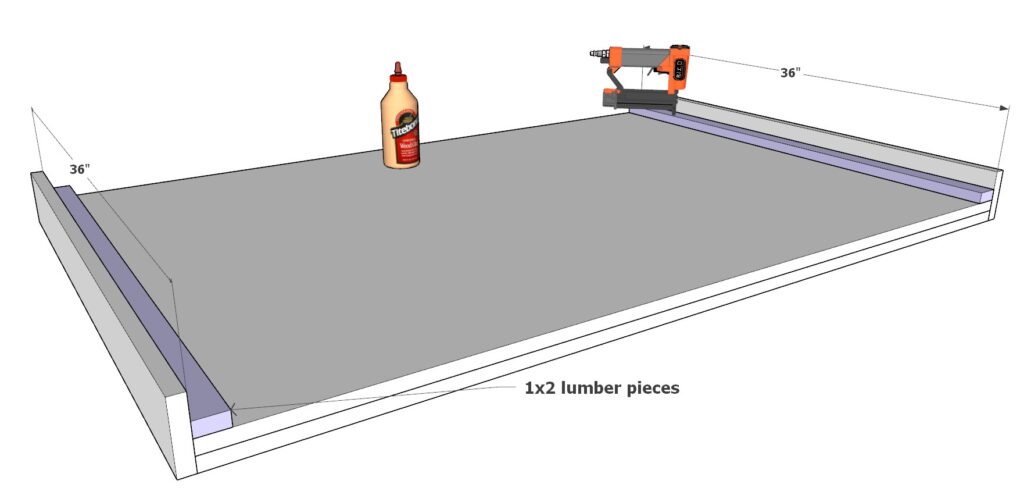
Sub-step 5: Create the Decorative Face
Decorative Lumber Preparation:
- Prepare various sizes of 1×4 lumber cut at 45 degrees on both ends:
- Two 38-1/2 inch
- Two 35 inch
- Two 27-3/4 inch
- Two 20-1/2 inch
- Two 13-1/4 inch
- Two 6 inch
- Two 10-3/16 inch
- Two 17-7/16 inch
- Two 24-11/16 inch
- Two 31-15/16 inch
- Two 37-1/16 inch
- Prepare various sizes of 1×4 lumber cut at 45 degrees on both ends:
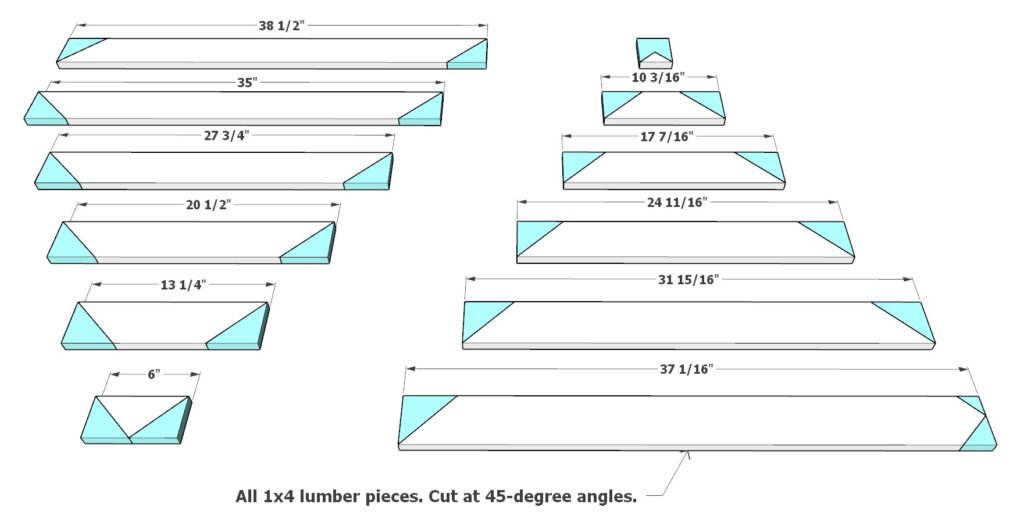
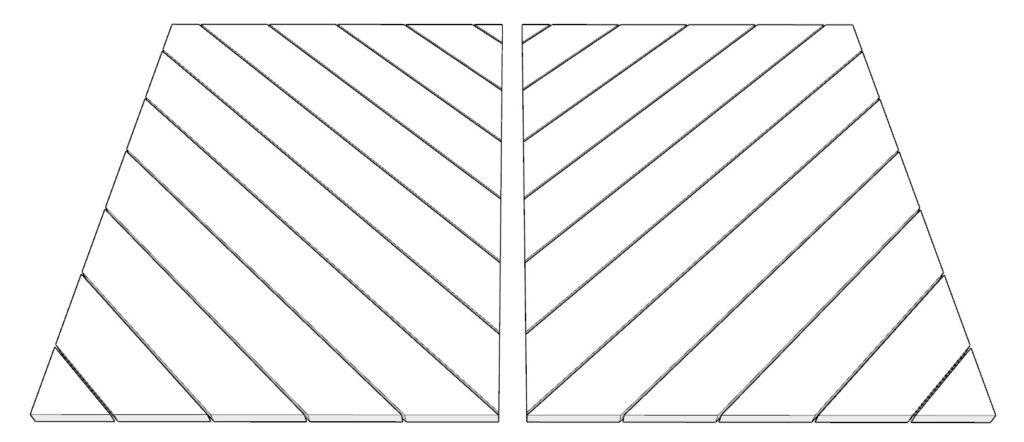
Assemble Decorative Face:
- Arrange the cut pieces diagonally to form the decorative face of the bar, maintaining a 1/8 inch gap between each piece.
- Secure these pieces to the bar face using wood glue and 1.25 inch pin nails.
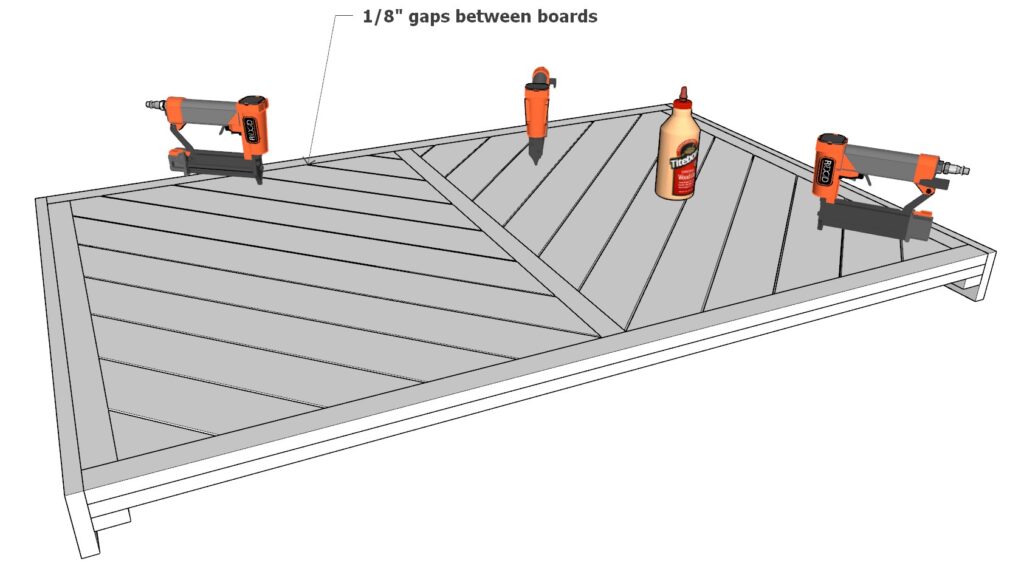
Step 2: Building the Bar Sides
Sub-step 1: Prepare the Side Panels
- Foundation Setup:
- Take two 36 inch x 20-1/2 inch, 3/4 inch thick plywood sheets. These will serve as the foundations for the sides of the bar.

Sub-step 2: Construct the Frame
- Assemble the Frame for Each Side:
- For each plywood sheet, arrange two 33 inch 1×2 lumber pieces and two 19-1/4 inch 1×2 lumber pieces as shown in the diagram.
- Secure these lumber pieces to the plywood sheet with wood glue and 1.25 inch pin nails.
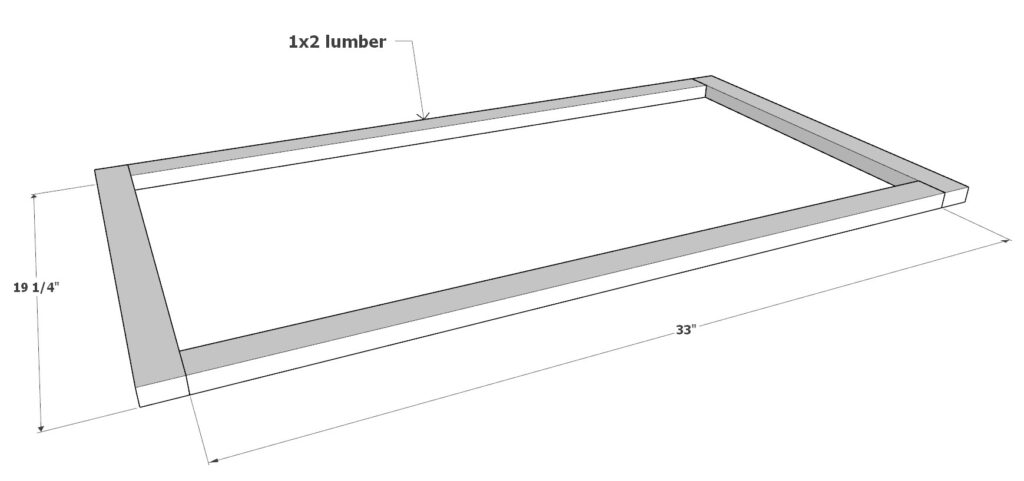
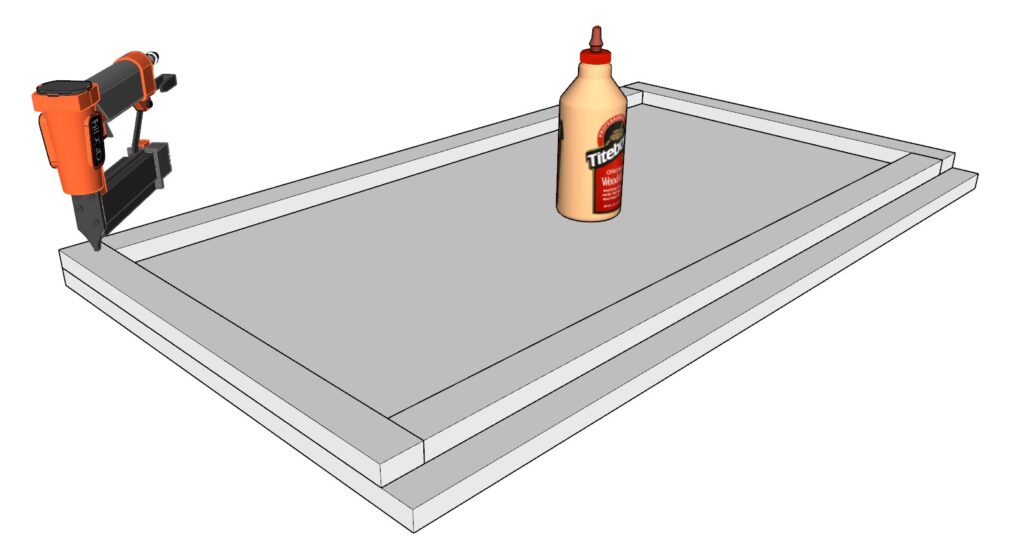
Sub-step 3: Repeat for Both Sides
- Create Two Identical Sides:
- Repeat the above steps to create a total of two side panels.
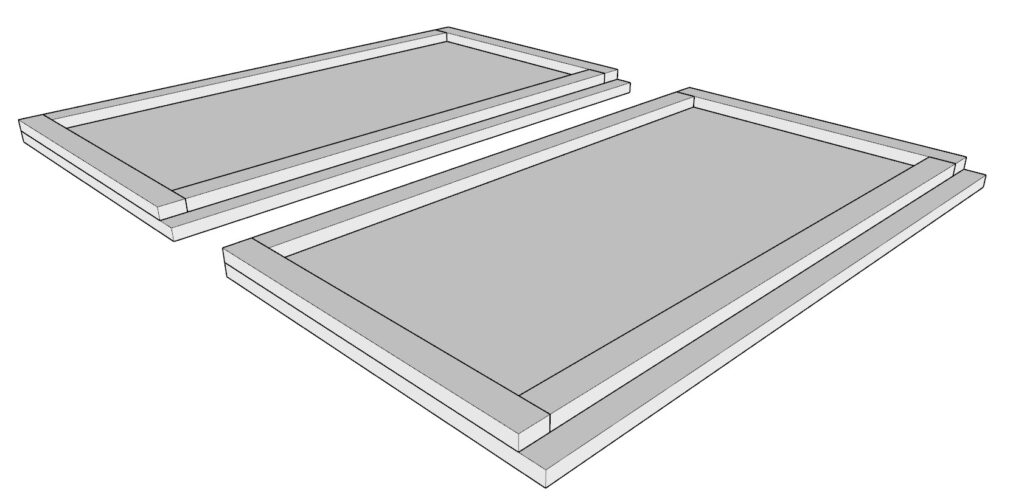
Step 3: Building the Shelves of the Bar
Sub-step 1: Create the Smaller Shelf
Prepare the Smaller Shelf Foundation:
- Take a 52-1/2 inch x 11 inch, 3/4 inch thick plywood sheet.
Attach End Pieces:
- Attach two 52-1/2 inch long 1×2 lumber pieces to the ends of the plywood (color-coded in salmon pink in the diagram).
- Secure these pieces with wood glue and 1.25 inch pin nails.
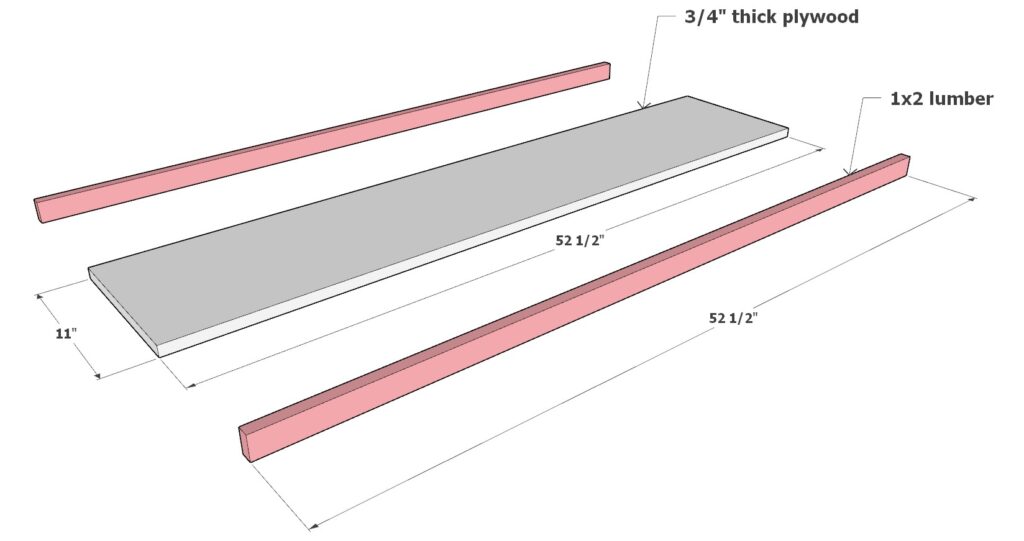
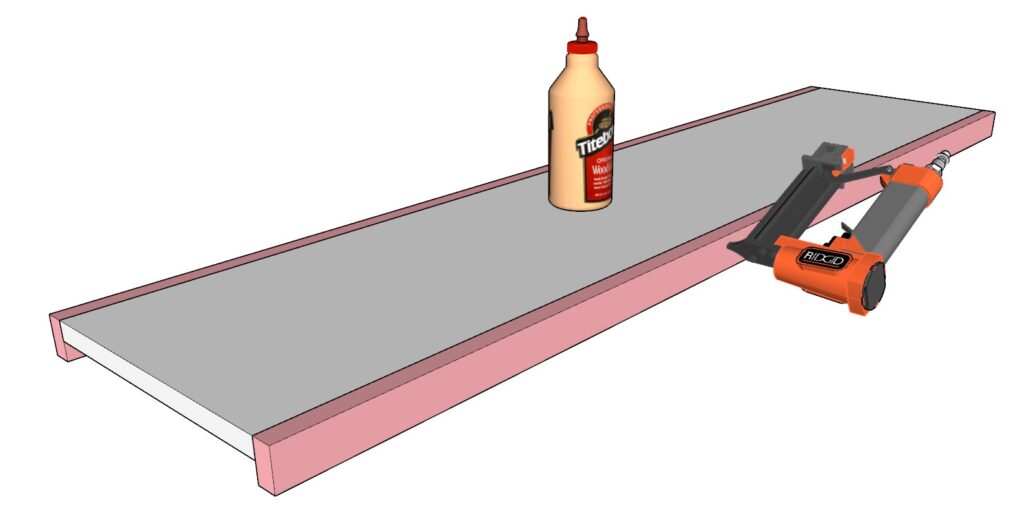
Sub-step 2: Create the Larger Shelf
Prepare the Larger Shelf Foundation:
- Take a 52-1/2 inch x 18 inch, 3/4 inch thick plywood sheet.
Attach End Pieces:
- Attach two 52-1/2 inch long 1×2 lumber pieces to the ends of the plywood (color-coded in salmon pink in the diagram).
- Secure these pieces with wood glue and 1.25 inch pin nails.

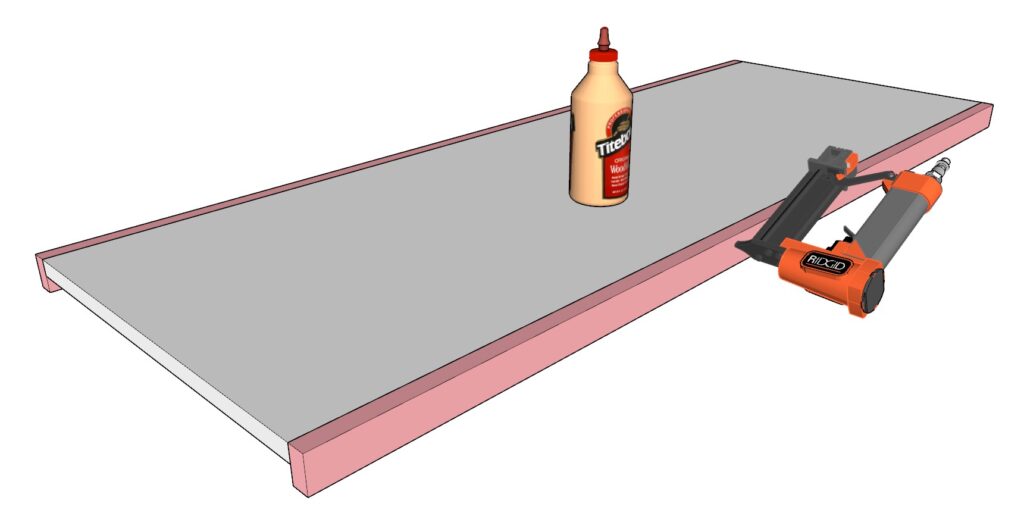
Step 4: Building the Bar Top
Sub-step 1: Create the Top Foundation
Prepare the Top Foundation:
- Take a 58-1/2 inch x 27-3/4 inch, 3/4 inch thick plywood sheet.
Attach the Lip Frame:
- Attach two 27-3/4 inch 1×2 lumber pieces and two 60 inch 1×2 lumber pieces around the edges of the plywood to create a lip.
- Secure these pieces with wood glue and 1.25 inch pin nails.
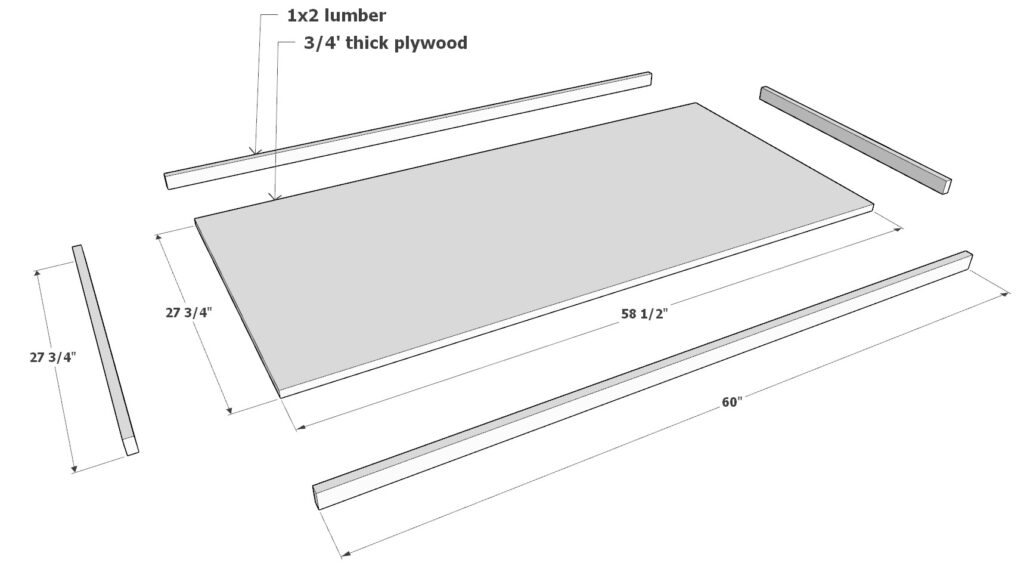
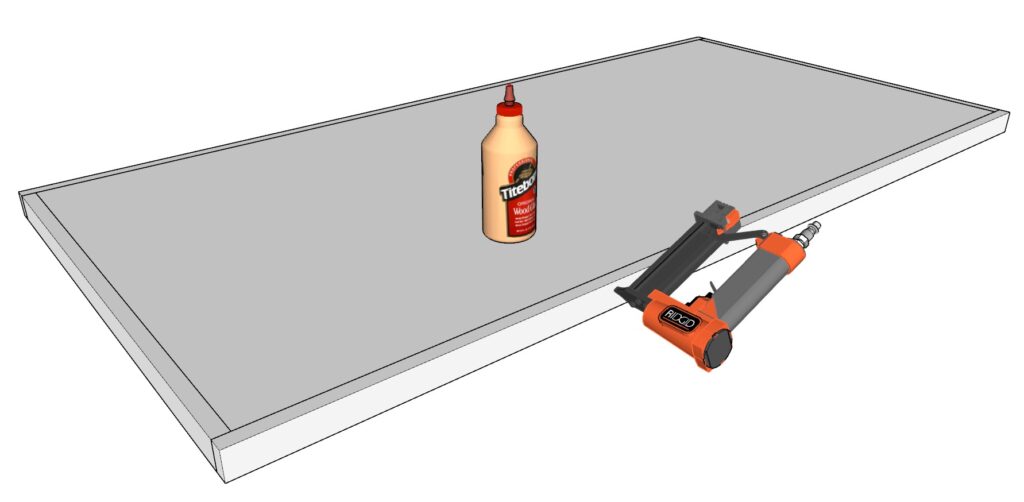
Sub-step 2: Reinforce the Bar Top
- Inlay the Support Pieces:
- Add one 55-1/2 inch long 1×4 lumber piece along the length of the top.
- Add two 26-1/4 inch long 1×2 lumber pieces on the shorter sides inside the lip frame.
- Add one 58-1/2 inch long 1×2 lumber piece along the other length inside the lip frame.
- Secure all these pieces with wood glue and 1.25 inch pin nails.
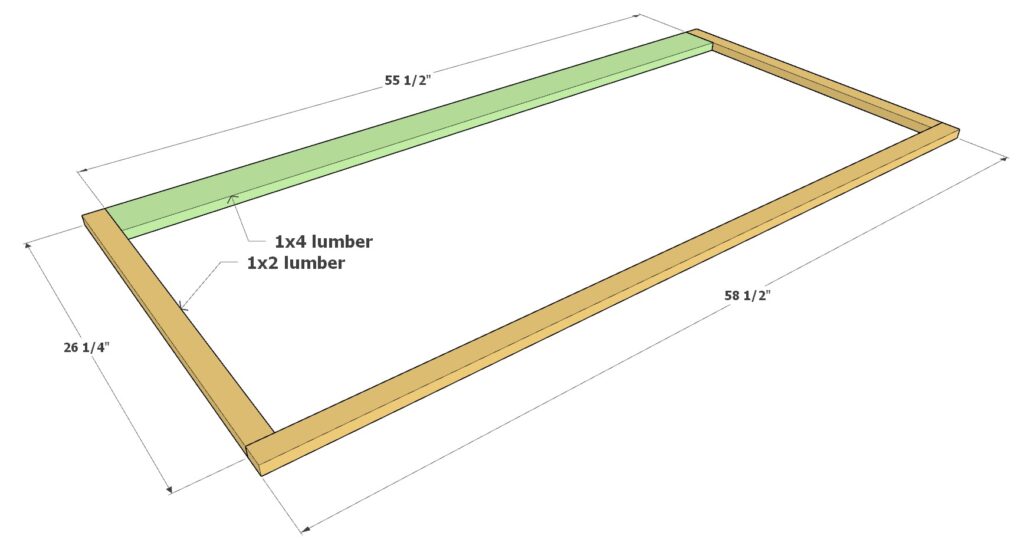
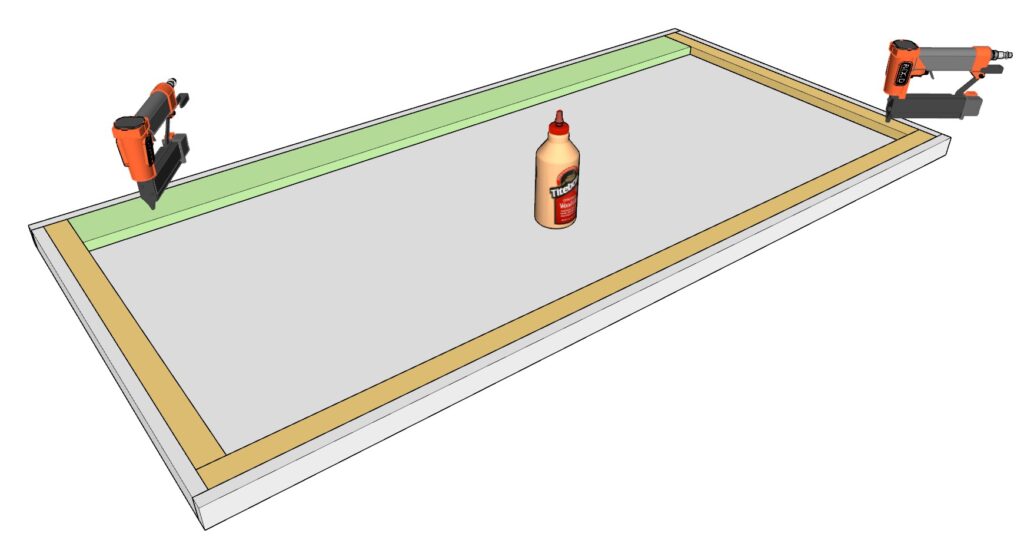
Step 5: Assembling the Bar Sides and Front
Sub-step 1: Attach the Sides to the Front
Install Piano Hinges:
- Take four 8-inch long piano hinges.
- Attach two hinges to each side, placing them at the ends as shown in the diagram for maximum stability.
- Ensure the hinges do not obstruct where the shelves will be attached in future steps.
- Secure the hinges with appropriate screws.
Test the Folding Mechanism:
- Fold and unfold the sides to ensure everything operates smoothly.
- Make any necessary adjustments to the hinges to ensure proper alignment and movement.
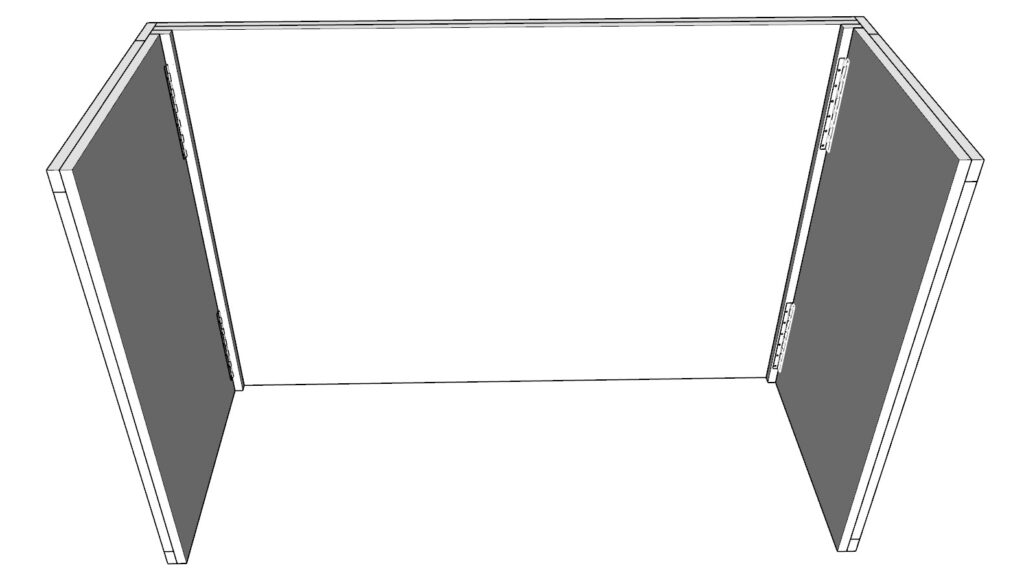
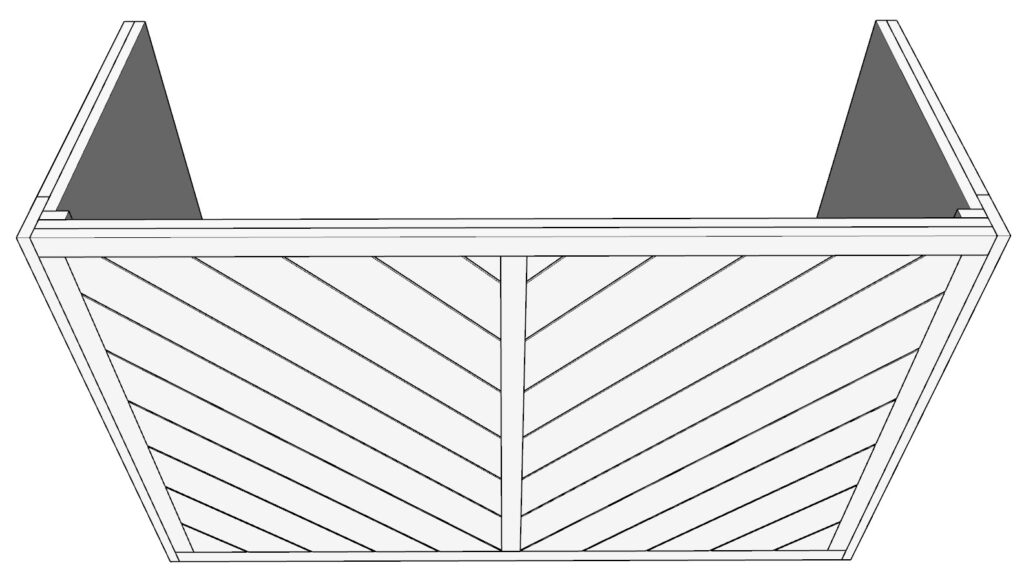
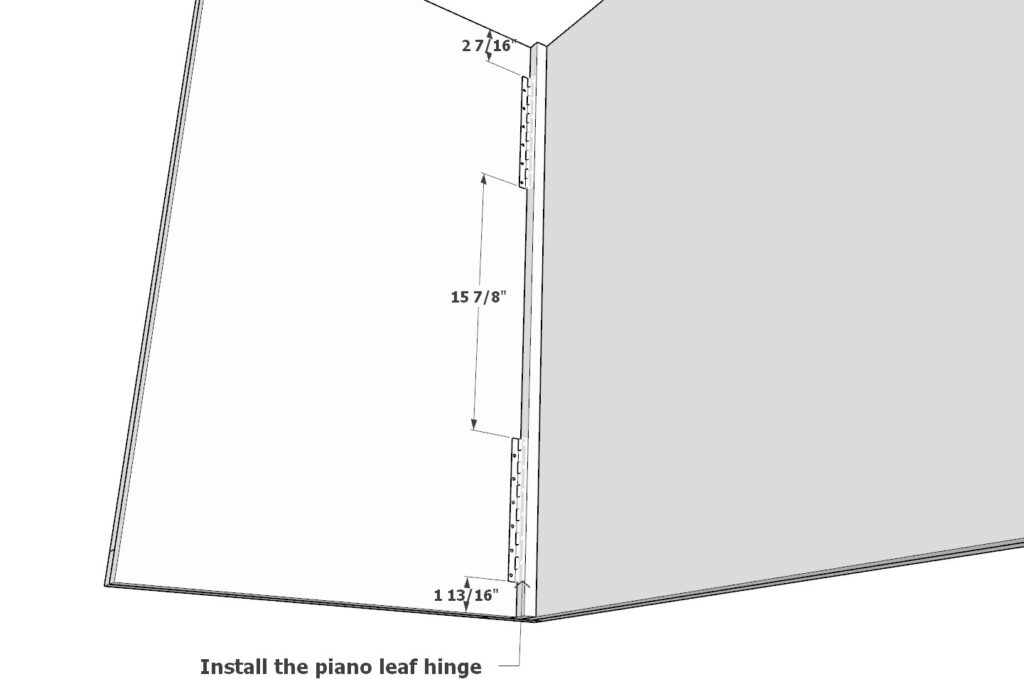
Sub-step 2: Attach the Bar Assembly to the Tabletop
Prepare the Tabletop:
- Place the tabletop upside down on a flat surface.
Inlay the Bar Assembly:
- Inlay the front and side panels (now attached with piano hinges) into the grooves of the tabletop.
Secure the Support Pieces:
- Attach two 20-1/2 inch long 1×2 lumber pieces and one 51-inch long 1×2 lumber piece (all color-coded in pink) to the bottom of the tabletop.
- Secure these pieces to the tabletop, not the coffee bar walls or front, using wood glue and 1.25-inch pin nails.
Ensure Snug Fit:
- Once the support pieces are in place, test the tabletop to ensure it can be easily popped on and off.
- The tabletop should fit snugly and securely without moving when in place.
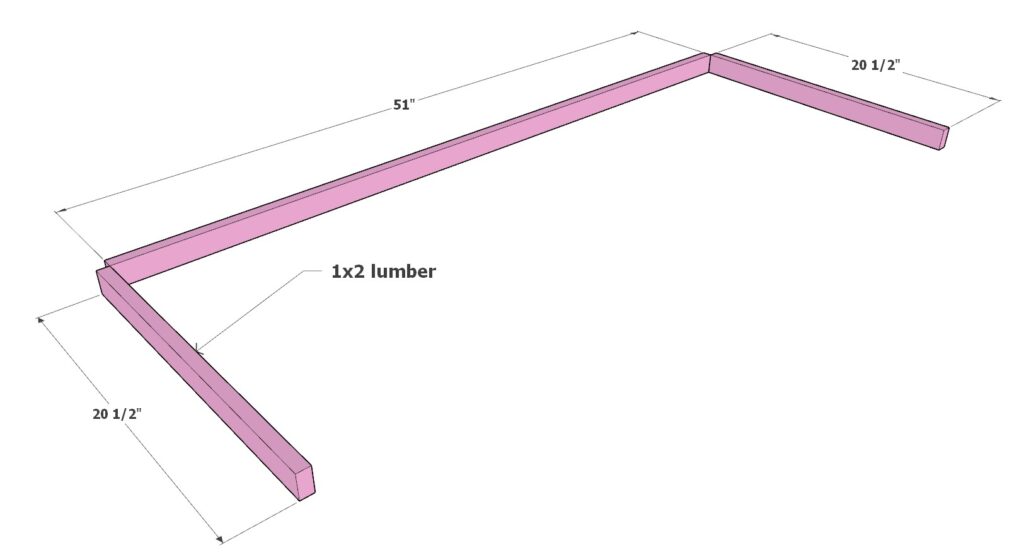
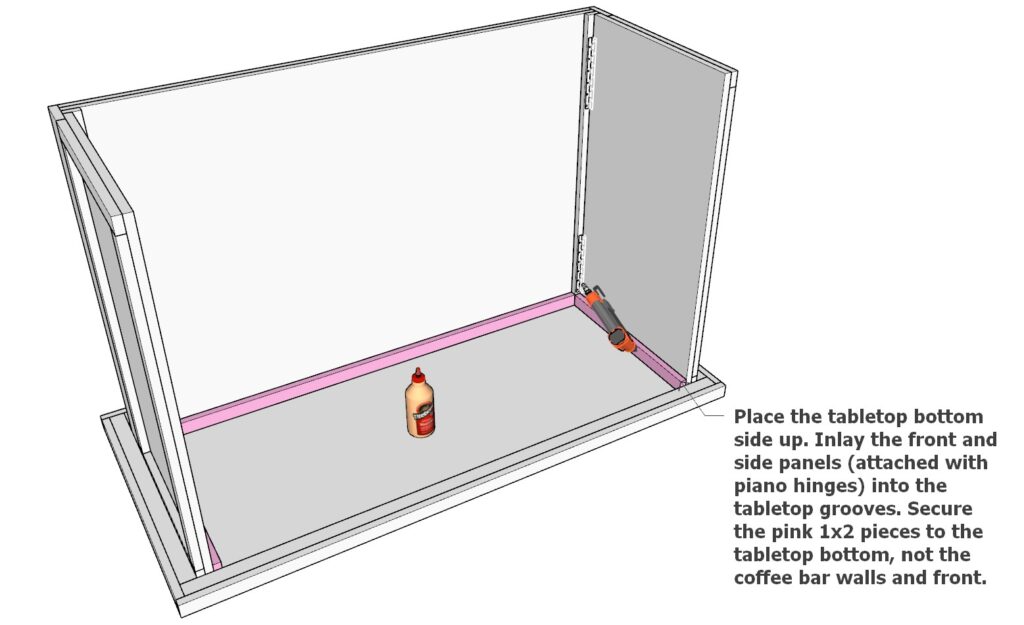
Step 6: Attaching the Shelf Supports
Sub-step 1: Attach the Larger Shelf Supports
Prepare Larger Shelf Supports:
- Take two 18 inch long 1×4 lumber pieces (color-coded in yellow).
- Inlay these pieces (without attaching) into the larger shelf unit as shown in the diagram.
Position the Larger Shelf:
- Place the larger shelf unit with the inlaid 1×4 supports onto the bar face and sides as shown in the diagram.
- Mark the spot for the shelf support with a pencil. This will be the height you choose for the larger shelf.
Attach the Larger Shelf Supports:
- Remove the shelf unit and attach the 1×4 lumber supports to the marked spots using piano hinges.
- Secure the supports with the piano hinges to ensure stability.
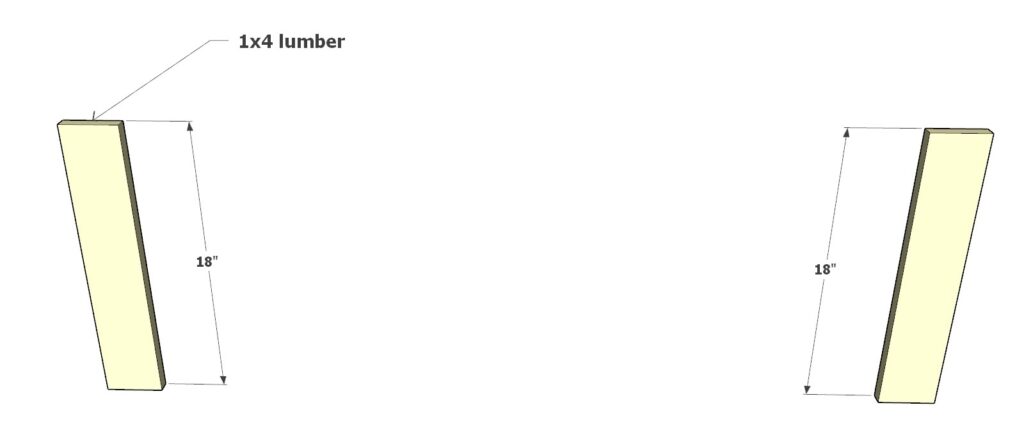

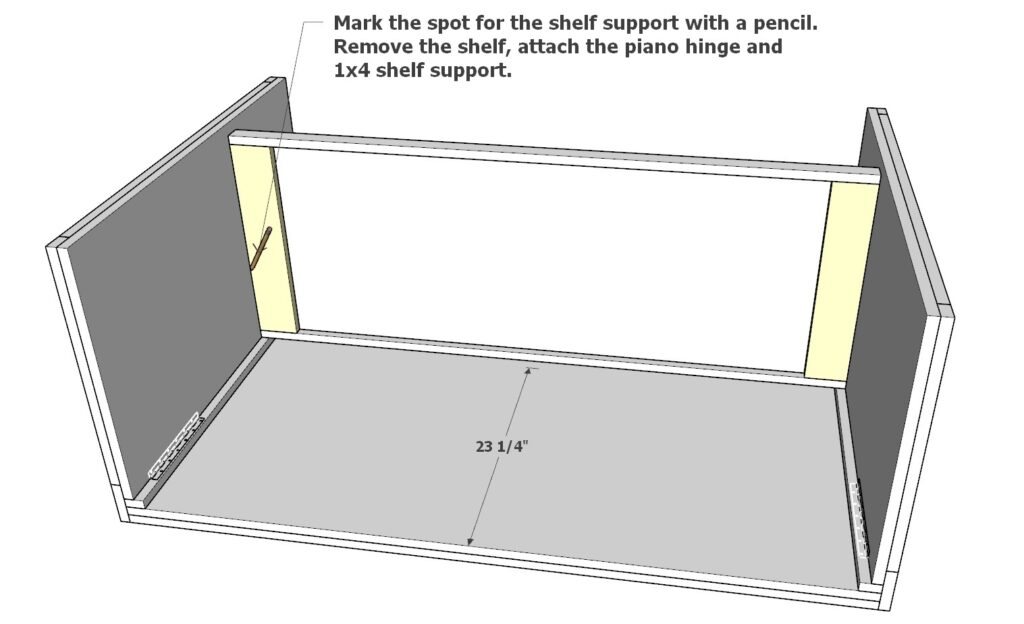
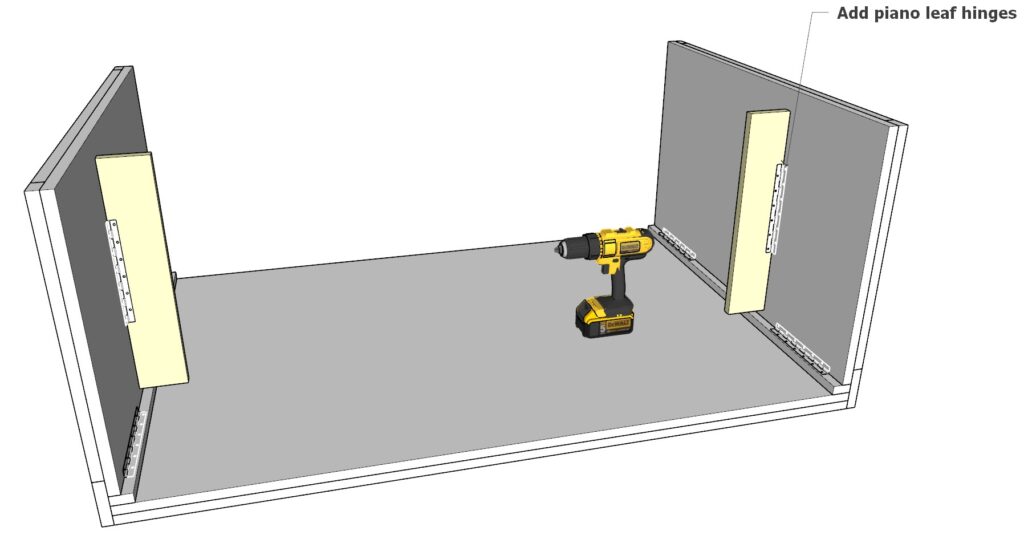
Sub-step 2: Attach the Smaller Shelf Supports
Prepare Smaller Shelf Supports:
- Take two 11 inch long 1×4 lumber pieces (color-coded in yellow).
- Inlay these pieces (without attaching) into the smaller shelf unit as shown in the diagram.
Position the Smaller Shelf:
- Place the smaller shelf unit with the inlaid 1×4 supports onto the bar face and sides as shown in the diagram.
- Mark the spot for the shelf support with a pencil. This will be the height you choose for the smaller shelf.
Attach the Smaller Shelf Supports:
- Remove the shelf unit and attach the 1×4 lumber supports to the marked spots using piano hinges.
- Secure the supports with the piano hinges to ensure stability.
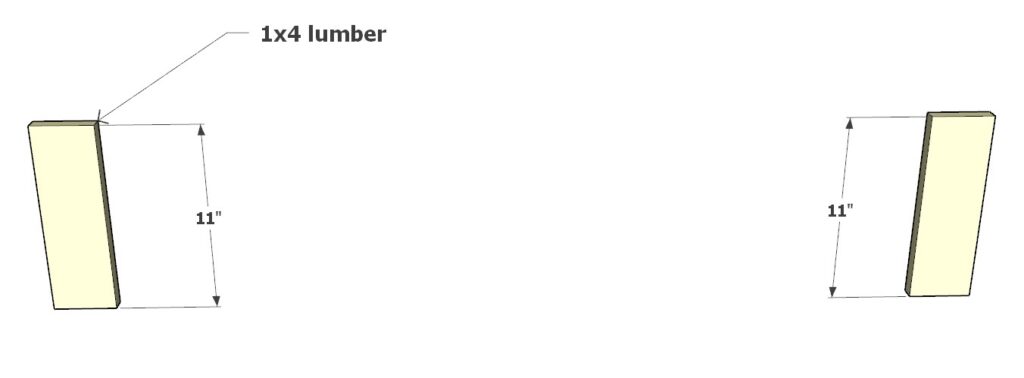

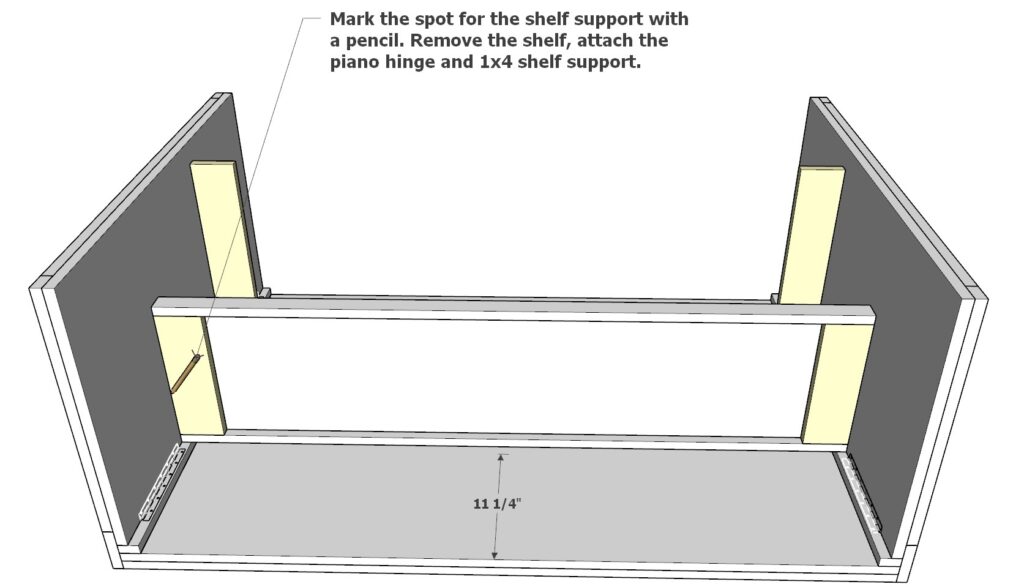
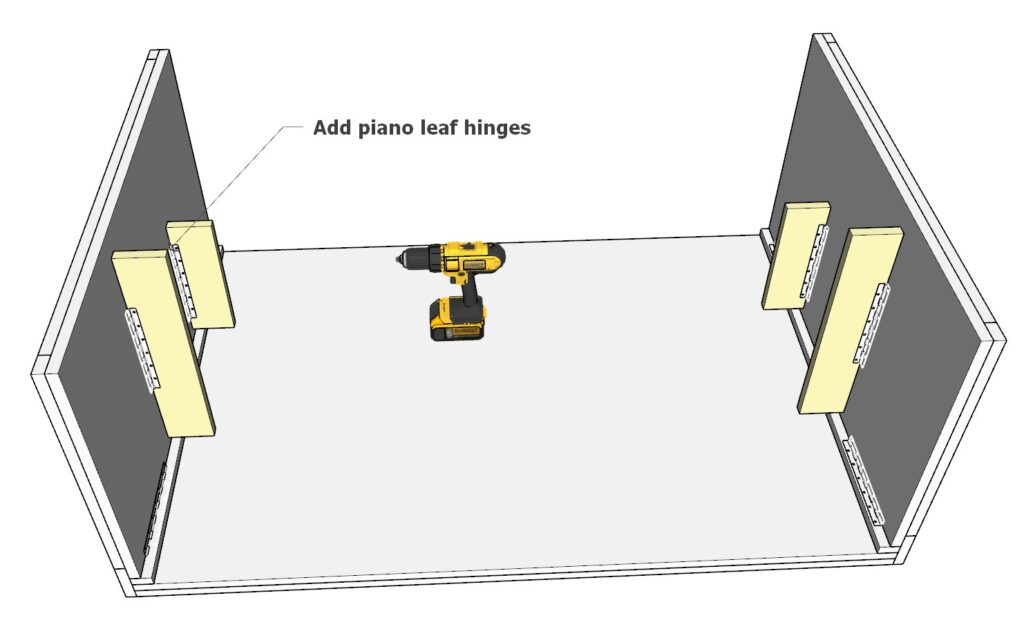
Sub-step 3: Sand the Shelf Edges
- Sand the Shelf Edges:
- Sand the edges of the 3/4 inch thick plywood shelves to fit the leaf hinges.
- Ensure the shelves rest directly on the supports, providing a smooth and stable surface.
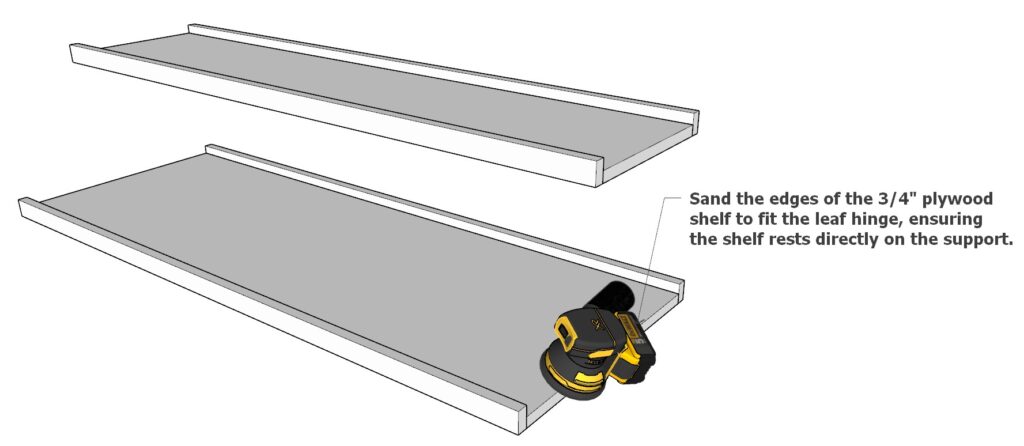
Step 7: Finishing the Coffee Bar
Sanding the Unit
Prepare for Sanding:
- Gather an orbital sander and sandpaper (80, 120, 220 grit).
- Wear a dust mask and safety goggles.
Sanding Process:
- Start with 80-grit sandpaper to smooth rough surfaces.
- Switch to 120-grit for refining.
- Finish with 220-grit for a fine surface.
- Sand with the grain to avoid scratches.
- Be gentle with plywood edges to avoid sanding through the veneer.
Concealing Pin Nail Holes
Fill Holes:
- Use wood filler matching the wood color.
- Apply with a putty knife, pressing into holes and smoothing level.
Sand the Filler:
- Once dry, sand the filled areas with 220-grit sandpaper.
- Wipe with a tack cloth to remove dust.
Preparing for Painting or Staining
Clean the Surface:
- Wipe down the unit with a damp cloth to remove dust.
- Let it dry completely.
Masking:
- Use painter’s tape to protect areas you don’t want to paint or stain.
Staining the Unit
Apply Stain:
- Stir stain well.
- Use a cloth or brush to apply, following the wood grain.
- Let it penetrate for 5-15 minutes, then wipe off excess.
- Allow drying as per manufacturer’s instructions.
Seal the Stain:
- Apply a clear sealer or polyurethane with a brush or cloth.
- Let it dry fully between thin coats, lightly sanding with 220-grit between coats.
Painting the Unit
Prime the Surface:
- Apply an even coat of primer and let it dry completely.
Apply Paint:
- Stir paint thoroughly.
- Use a brush or roller to apply thin, even coats, following the grain.
- Let each coat dry fully before adding the next (typically two to three coats).
- Lightly sand with 220-grit between coats for a smooth finish.
Final Touches:
- Remove painter’s tape and inspect for touch-ups.
Attaching the Casters
To add mobility to your folding coffee bar, you can attach a set of 1-inch casters. Here’s how to do it:
Purchase the Casters:
- Obtain a set of 4, 1-inch rubber casters suitable for furniture. These should be heavy-duty, low-profile, and have locking mechanisms.
Prepare the Bar Bottom:
- Ensure the bottom of the bar is clean and free of any debris.
- Mark the positions for the casters at each corner of the bar’s bottom. Make sure the marks are evenly spaced and aligned.
Attach the Casters:
- Position each caster over the marked spots and secure them using screws that come with the caster set.
- Use a drill to drive the screws into the bottom of the bar, ensuring the casters are firmly attached.
- Make sure all casters are properly aligned and that the locking mechanisms are functional.
Test the Mobility:
- Once all casters are attached, test the mobility of the coffee bar by moving it around.
- Lock the casters to ensure the bar stays in place when stationary.
Renting Out Your Coffee Bar
Set Rental Pricing:
- Charge $150-$300 per event based on local market rates.
Prepare for Rental:
- Ensure the unit is clean and undamaged.
- Provide assembly and usage instructions.
Market Your Rental:
- Take high-quality photos.
- List on rental websites, social media, and community boards.
